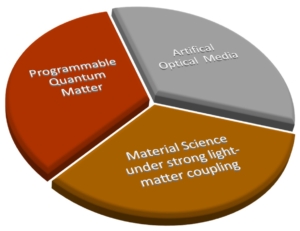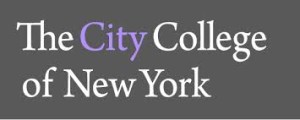RESEARCH
Overview:
 Research in the Laboratory for Nano and Micro Photonics (LaNMP) can be best summarized as exploration of light-matter interaction at the nanosale. We are interested in exploring emergent material properties (classical and quantum) that arise when matter is subjected to artificially engineered electromagnetic environments. The goal is to develop a largely unexplored strategy for realizing programmable matter based on coherently combining material excitations with light – realizing half-light half-matter quasiparticles. We hope to answer fundamental questions related to ultimate limits of controlling light-matter interaction and apply these concepts in applications such as quantum simulators, energy harvesting, ultrafast light emitters, and catalysis.
Research in the Laboratory for Nano and Micro Photonics (LaNMP) can be best summarized as exploration of light-matter interaction at the nanosale. We are interested in exploring emergent material properties (classical and quantum) that arise when matter is subjected to artificially engineered electromagnetic environments. The goal is to develop a largely unexplored strategy for realizing programmable matter based on coherently combining material excitations with light – realizing half-light half-matter quasiparticles. We hope to answer fundamental questions related to ultimate limits of controlling light-matter interaction and apply these concepts in applications such as quantum simulators, energy harvesting, ultrafast light emitters, and catalysis.
This theme of “light engineered programmable matter” is implemented through three main thrust areas: Thrust 1: Material Science under strong light-matter coupling [DOE, NSF], Thrust 2: Programmable quantum matter based on half-light-half-matter quasiparticles [NSF Quantum Initiative, AFOSR], and Thrust 3: Artifical optical media for engineering forbidden optical transitions in nanomaterials [DOD, NSF].
Some of the key recent results from the group include the demonstration of spin correlated polaritons in vdW magnets (Nature Nanotech. 2022), use of Rydberg excitons to enhance nonlinear interactions between photons (Nature Comm. 2021), realization of a polariton LED at room temperature using 2D materials (Nature Nanotech 2019), deterministic activation of single photon emitters via strain engineering in hexagonal boron nitride (Optica 2018), demonstration of long range polariton propagation in 2D materials (Nature Nanotech. 2018), optical control of strongly coupled microcavity polaritons with valley degree of freedom (Nature Photonics 2017), new class of artificial photonic media: photonic hypercrystals (PNAS 2017, Nano Lett. 2016), strong light-matter interaction between 2D materials and cavity photons (Nature Photonics 2015), active hyperbolic metamaterials (Optica 2015), organic-inorganic hybrid materials via strong light-matter coupling (Physical Review Letters 2014), control of light-matter interaction using an idea from the field of topology (Science 2012), direct visualization of transport of excitons in organic materials (Nature Comm. 2014) and a flexible laser technology (US Patent # 8610103, 2013).
The group consists of post-doctoral researchers, doctoral students, undergraduate and high school students. Alumni from the group have gone to positions in national labs, tenure track faculty positions and post-doctoral positions at internationally renowned institutions. We are always looking for motivated students and post-docs to join us. If you are interested in joining us, do contact Prof. Menon.
Research Topics :
- Quantum emulators based on exciton polaritons (NSF -QII TAQS)
- Valley qubit based on 2D materials in cavities (NSF QII-TAQS)
- Integrated quantum photonics using 2D materials (NSF-ECCS)
- Strain engineering in 2D materials (NSF – DMR)
- Reservoir computing using polaritons (ARO)
- Polariton condensates in organic molecular systems (AFOSR MURI)
- Strongly correlated photons using polaritons in 2D materials (AFOSR Global)
- Quantum nonlinear optics using polaritons in perovskites (NSF STC- IMOD)
- Quantum light emitters based on defects (NSF – IDEALS CREST)
- Excitonic lattice and coherent phenomena in 2D TMDs (NSF MRSEC – PAQM)

